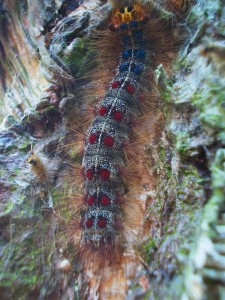I had a go at the ‘regular’ butterfly transect down at the reserve. It was warm and humid but overcast and it didn’t look promising. A large willow covered in Gypsy Moth caterpillars had been loosened by all the rain, and had fallen across the path. I lopped off the crown branches and carted them down to a dead hedge to fill in a gap someone had been climbing through.
The sun peeped out and the cloud cover reduced to maybe 60%, making it warm and pleasant. A single Small White appeared over the ramp and made it onto the transect. I wandered around the reserve, but there was nothing until I found a solitary Speckled Wood in the large meadow.
However, there was plenty to notice all around. The building site looks a lot better now the ‘Costa Concordia’ white horizontal balcony cladding on ‘Chiswick Point’ (well, it’s in Acton Green and on Bollo Lane, but I guess Bollo Block didn’t quite have the same cachet) has been completed: it will be nice when the noise of cranes and drilling stops.
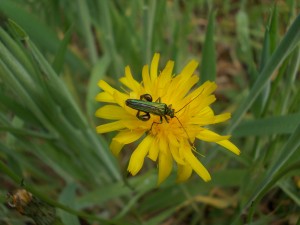
Many ichneumon flies were out on the Hogweed, some mating; almost every Catsear flowerhead had one or two handsomely iridescent green Oedemera nobilis, the “thick-kneed flower beetle” – only the males have the swollen hind femurs, but both sexes have a gap between the slender wing-cases. The males were of noticeably varying sizes, presumably the large ones having the best chances of mating.
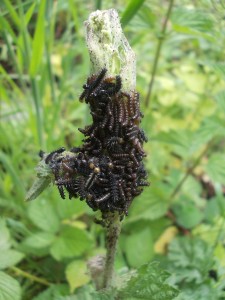
A fine bustling mass of hairy black early-instar caterpillars of the Peacock butterfly, wriggled on their silk tent atop a Stinging Nettle.
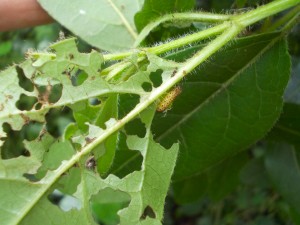
The Laburnum by the main path is being eaten full of holes, probably a good thing for a non-native shrub in the reserve, by spotted and striped larvae of the Laburnum Leaf Beetle. Never seen it before.

The wild rose in the car park hedge was host to a mating pair of Rose Sawfly, a serious pest for gardeners but an attractive insect with a bright yellow abdomen.
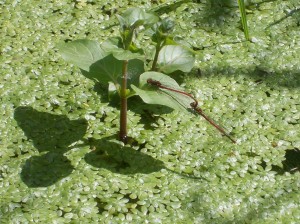
As if all these treats weren’t enough, there were Large Red Damselflies mating and egg-laying on the pond, Common Blue Damselflies, lots of Hoverflies, Click Beetles (seemingly Athous haemorrhoidalis), large brown frog tadpoles and small black toadpoles, singing Blackcaps, a Song Thrush, a Jay, and plenty more. Maybe it’s not just Bugs Day on Saturday, but Bugs Week.

